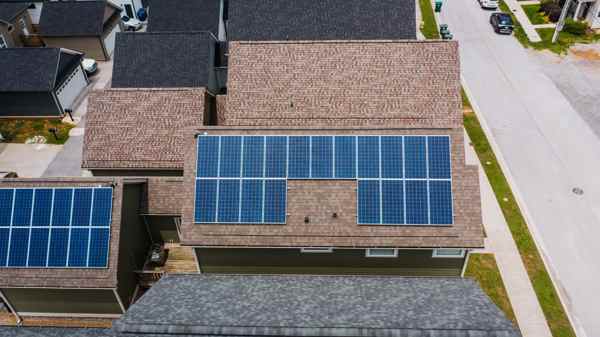可以存放电池吗?
当您计划安装储能, 提出的第一个实际问题之一是, “我把一切都放在哪里?" 这自然会导致您想知道您是否可以通过堆叠电池来节省空间. 这是一个很好的问题, 答案对于系统的安全和寿命至关重要.
如果为此,您只能将电池彼此堆叠在彼此顶部. 这些专用的可堆叠电池模块具有连锁外壳和增强结构的稳定性. 对于许多其他系统, 喜欢服务器架电池, “堆积" 意味着将它们牢固地安装在支撑柜或机架中. 简单地堆积标准电池是危险的,永远不要做.

在 吉克斯太阳能, 安全和专业安装至关重要. 现代 可堆叠电池存储 我们与之合作的产品考虑了这些原理, 允许安全, 袖珍的, 和可扩展的能源解决方案. 让我们探索与电池存储有关的此和其他热门话题.
什么是可堆叠的电池?
您可能已经看到了“可堆叠电池”一词" 在研究太阳能存储时. 这只是一个流行语吗, 还是指特定类型的技术? 了解这个概念是欣赏现代的关键, 灵活的储能设计.
A “可堆叠的电池" 是一个模块化储能单元, 通常使用安全且持久的LFP (铁磷酸锂) 化学, 该专门设计以物理放置并与其他同一单元进行电互连. 该设计的主要目的是让您轻松 扩展您的总储能容量 创建更大的, 定制的电池组非常适合您的需求.

深入潜水: 模块化设计的力量
“可堆叠的”" 概念建立在模块化和工程整合的基础上:
- 标准化的构件: 每个单元都是一个独立的模块, 住宅系统的容量通常约为5KWH. 这使您可以从适合当前预算和能源使用的能力开始.
- 专为扩展而设计: 核心好处是可伸缩性. 如果您购买电动汽车或您的家人成长, 您通常可以简单地将另一个模块添加到现有的堆栈中以增加存储容量, 而不是更换整个系统. 这是 可堆叠电池存储 我们在GYCX太阳能提供的产品.
- 物理整合: 这些模块被设计为安全地堆叠. 这可能意味着:
- 直接堆叠: 用锁定的套管锁定在一起以稳定.
- 架子安装: 最常见的专业方法, 哪里模块 (通常称为“服务器架电池”) 旨在滑入标准的19英寸机柜, 在铁轨的支持下. 这确保了完美的对齐, 稳定, 和气流.
- 电气整合: 这些模块设计用于易于安全的电气连接, 通常在保持系统电压的同时同时增加容量 (例如, 48V).
- 明智的交流: 每个模块都包含其自己的电池管理系统 (电池管理系统1. ), 并堆放, 这些系统相互通信和主要的太阳能逆变器,以确保整个银行作为一个, 健康, 和有效的单位.
可堆叠的电池不仅是电池; 这是智能的组成部分, 可扩展的能源存储生态系统.
我需要多少个太阳能电池板才能使用10kWh电池?
10kWh电池是家庭能量存储的流行尺寸, 提供备用能力和每日骑自行车能力的巨大平衡. 如果您选择了10kWh电池, 下一个逻辑问题是, 每天需要多少太阳能电池板来有效地充电?
可靠地充电 10kWh锂电池 每天, 通常,您通常需要一个太阳能电池板阵列 2KW和3.5kW 大小. 这大致转化为 5 到 9 现代的, 高效太阳能电池板 (额定额为350W至450W). 确切的数字在很大程度上取决于您的地理位置的平均每日“高峰太阳小时”" 以及系统的整体效率.

深入潜水: 正确尺寸的太阳能电池阵列
这是我们在GYCX太阳能执行的计算的简化查看:
- 所需的能量: 10kWh电池, 使用时 90% 其容量 (LFP的常见排放深度或DOD), 需要 9 可以补充的能量.
- 峰值太阳小时 (PSH): 这是基于您的位置的关键变量. 这是太阳强度达到顶峰的小时数. 像新加坡这样的晴天气候可能平均 4-4.5 PSH. 阳光明媚, 较少的多云的位置可能会得到 5-6 PSH.
- 系统损失: 我们考虑了由于面板加热而损失的能量 (在炎热气候中尤其重要), 接线, 和逆变器/电荷控制器效率. 典型的效率因素是附近 80% (或者 0.80).
- 计算:
- 所需的太阳能 (千瓦) =所需的能量 (千瓦时) / (峰值太阳小时x效率系数)
- 例子: 9 千瓦时 / (4 PSH X 0.80) = 9 / 3.2 = 2.8 千瓦 (或者 2,800 瓦特)
- 面板数量: 将所需的功率除以您选择的面板瓦数.
- 带有400W面板: 2,800瓦 / 400瓦 = 7 面板.
至关重要的是,您的太阳能阵列和电池平衡. 尺寸较小的阵列将难以每天为电池充满电, 限制您的可用备份和储蓄. 我们的专业知识在于创建这些完美平衡的系统.
- 带有400W面板: 2,800瓦 / 400瓦 = 7 面板.
整个房屋备用将持续多长时间?
许多人的梦想是备用电池,可以在中断期间为整个房屋供电. 但是,您可以实际期望这样的系统能够持续多久? 答案完全取决于两个关键因素: 这 电池库的大小 (它的KWH容量) 还有你 家的电力消耗.
A 全室电池备份 可以持续到任何地方 几个小时到几天. 对于普通房屋, 一个 10-15千瓦时电池系统 可能只有动力 基本的 电路 (灯, 冰箱, 互联网) 为了 12-24 小时. 为an 全部的 房子, 包括空调等重载, 您可能需要更大的系统 30kWh或更多 通过延长的中断持续, 特别是如果没有太阳能充电.

深入潜水: 这都是关于容量与. 消耗
让我们看一些了解数学的情况:
- 公式: 运行时 (小时) =电池可用容量 (千瓦时) / 房屋的平均功率吸引力 (千瓦)
- 设想 1: 只有必需品. 你在运行冰箱, 一些灯, 您的互联网路由器, 和粉丝. 您的总持续功率抽奖可能会在 500 瓦特 (0.5 千瓦). 使用10kWh电池, 您的运行时间大约是: 10 千瓦时 / 0.5 kW = 20 小时.
- 设想 2: 中等用途. 您正在运行Essentials和电视, 电脑, 还有一些厨房电器. 您的力量抽取可能平均 1.5 千瓦. 使用相同的10kWh电池, 您的运行时间下降到: 10 千瓦时 / 1.5 kW = 〜6.7小时.
- 设想 3: 大量使用 (带空调). 中央空调是一个巨大的能源消费者, 容易绘制 3-5 kw独自. 如果您的平均负载是AC 4 千瓦, 那10kWh的电池只会持续: 10 千瓦时 / 4 kW = 2.5 小时.
这就是为什么尺寸如此重要的原因. 真正备份整个房子," 特别是在AC很关键的炎热气候中, 您需要一个大电池库. 这是 可堆叠电池存储 变得如此有价值. 我们可以使用多个模块为您设计一个系统 20, 30, 甚至 40+ 真正的全家弹性所需的千瓦时能力. 与太阳能配对时, 该系统每天都可以充电, 在延长的阳光明媚的中断期间提供潜在的无限电源.
太阳能真的值得吗?
与面板的所有讨论, 电池, 和系统成本, 退后一步,问一个大问题: 正在安装太阳能系统, 有或没有电池, 真正值得投资?
是的, 对于绝大多数房主和企业, 太阳能绝对值得. 这是一项经过验证的技术,可大大提供大量财务回报 减少甚至消除电费. 超越积蓄, 它提供 能源独立, 反对公用事业成本上升的树篱, 增加属性价值, 并提供功能强大 环境利益. 当您添加电池时, 像现代 可堆叠电池存储 系统, 价值主张通过提供备份功率并最大程度地利用您产生的清洁能源而变得更加强大.

深入潜水: 太阳能的强大ROI
让我们看看为什么太阳能是如此引人注目的投资:
- 财务节省: 这是最直接的好处. 通过自己发电, 您从公用事业公司购买大量购买. 在高电价的地方, 像新加坡, 每月节省可能是可观的, 导致系统投资回收期通常比设备的保证寿命短得多.
- 对冲通货膨胀: 公用事业价格历史上随时间上涨. 太阳系有效地允许您锁定下一个的电力成本 25+ 年, 提供可预测的费用并保护您免受未来价格上涨.
- 能源独立性和韧性: 使用标准网格系统, 您可以减少对公用事业的依赖. 当您添加电池时, 您会获得真正的韧性. 您可以在电网中断期间保持力量, 当您真正需要它时,很难夸大的收益很难夸大.
- 环境责任: 太阳能是干净的, 可再生能源. 在屋顶上安装系统可以直接降低家庭的碳足迹,并有助于清洁剂, 每个人都更可持续的能源未来.
- 政府 & 当地的激励措施: 许多政府提供税收抵免 (喜欢 30% 美国联邦ITC), 回扣, 或其他激励措施可以大大降低太阳能的前期成本, 使财务案件更加强大.
- 增加财产价值: 研究始终表明,带有太阳能电池板安装的房屋经常出售的房屋,而不是与众不同的房屋.
GYCX太阳能故事: “我们与客户一次又一次地看到它. 他们最初是在我们来找我们的, 但是几年后, 他们告诉我们最好的部分是心灵的平静 - 知道他们正在产生自己的清洁能力,并受到避免中断的保护. 这种能源安全的感觉确实是无价的。"
从了解堆叠电池的安全性到为您的存储空间尺寸尺寸, 家庭能量的世界似乎很复杂. 但是核心原则很简单: 现代的, 模块化电池系统提供了令人难以置信的灵活性, 并将它们与太阳能配对创造强大的, 任何房主或企业的宝贵资产.
在GYCX太阳能, 我们的专业知识在于揭开这一过程. 我们可以帮助您确定太阳能是否适合您, 设计一个尺寸的系统, 并选择最好的 可堆叠电池存储 实现您的目标. 立即与我们联系以开始对话!
了解电池管理系统的概念将帮助您更好地比较和理解与电池相关的数据概念. 这将帮助您选择最适合我们公司需求的产品. ↩
